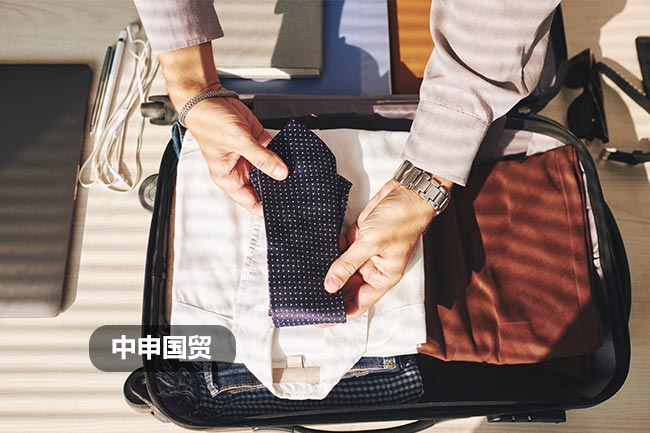Exporting luggage and high-end clothing: It’s more than just packing. It’s an art and science. From compliance to logistics to quality and style, we explain it all.

A. Export Process and Classification of Goods
1.1 Basic operating processes
Providing goods information: basic information such as product name, volume, weight, port of departure, port of destination must be prepared in advance.
Declaration elements: including taste names, types (dressing boxes, suitcases, small handbags, etc.), surface materials (plastics, textiles, etc.), brands and model numbers.
1.2 Commodity codes and tax refund rates
1, with plastic or textile materials as the surface of the pull box, its commodity code is 42021210.00, the tax refund rate is 15%.
2, with leather or recycled leather as the face, the commodity code is 42021190.90, and the tax refund rate is 15%.
1.3 Separate packaging
In accordance with the Rule 2 of the General Classification Rules of the Coordinated System, separate packaging of the pull box shall be marked as unassembled or disassembled in the customs clearance.
The specific HS code must be determined according to the material of the box.
B. Export and export of clothing
2.1 Product labels and information
The product logo should be specified, and the product name, product grade, material, specification, factory name, factory address, contact telephone, implementation standards and other information should be indicated on the product and product packaging.
REACH Regulation and Technical Barriers
REACH regulations require that products entering the EU must provide rigorous chemical content testing certificates, which can not only become a trade barrier, but also increase the cost of testing for enterprises.
In addition to the EU, other countries also set restrictions on specific chemicals such as nitrogen dyes, five * phenol, formaldehyde, six-value uranium, heavy metals, etc., which can affect the export of products.
2.3 Clothing characteristics and tariff rate
1, clothing goods have the characteristics of short raw material storage period, marked seasonality, and large fluctuations with the trend, so the speed of clearance requirements are higher.
In addition to requiring basic fire and theft prevention measures, advanced clothing in the transportation process also needs to pay special attention to the protection against wrinkles and deformation.
Import Tariffs and Classification of Clothing Goods
3.1 Service value and timing
We pledge to complete the import declaration within 5 working days to meet the special needs of clothing goods for rapid clearance.
3.2 Classification of goods
Clothing goods are mainly divided into garments woven or woven (Chapter 61), nonwoven or woven garments (Chapter 62), and other textile products (Chapter 63).
The main difference between the suit and the suit is that the suit is made of two or three pieces of the same fabric, while the suit is made of the same fabric and as a retail packaging.
Through the detailed analysis and explanation above, we believe that you have a more comprehensive and in-depth understanding of the export of pullbox and clothing products. If you have any questions or need further services, please contact us at any time.We offer professional, comprehensive, one-stop service to ensure your export business goes smoothly.


 Follow customer service WeChat
Follow customer service WeChat